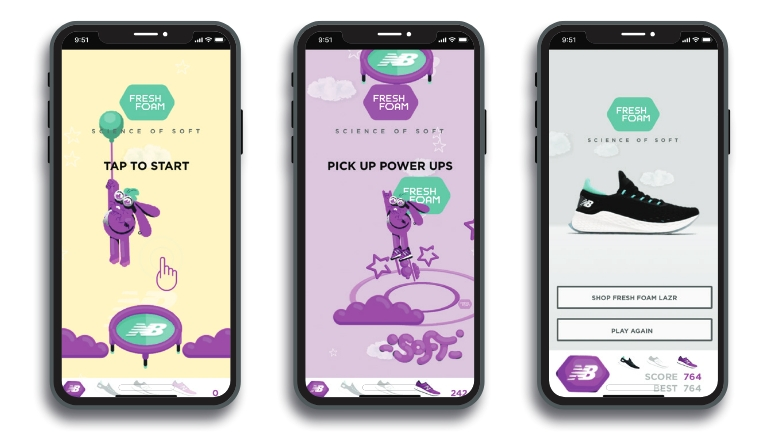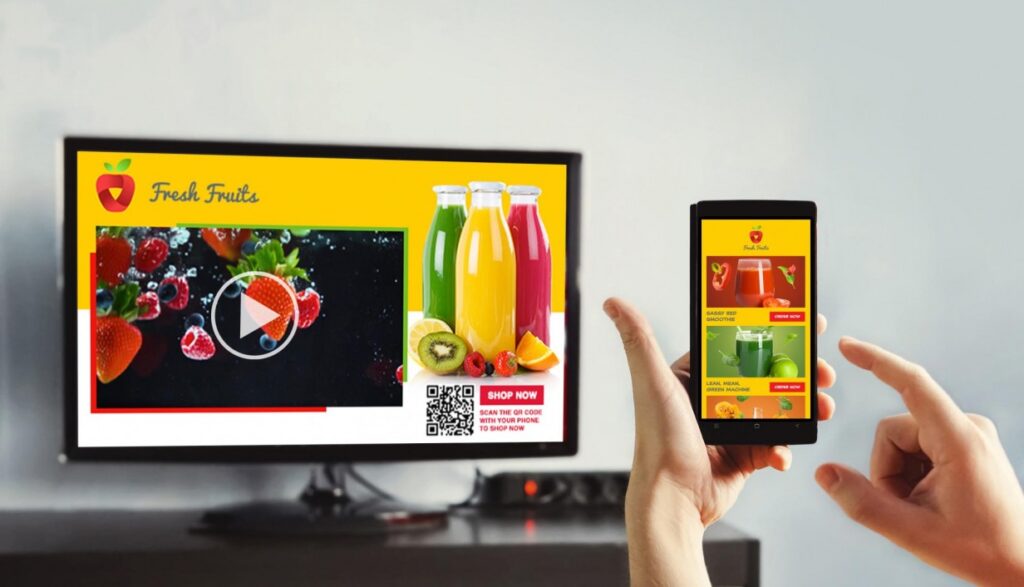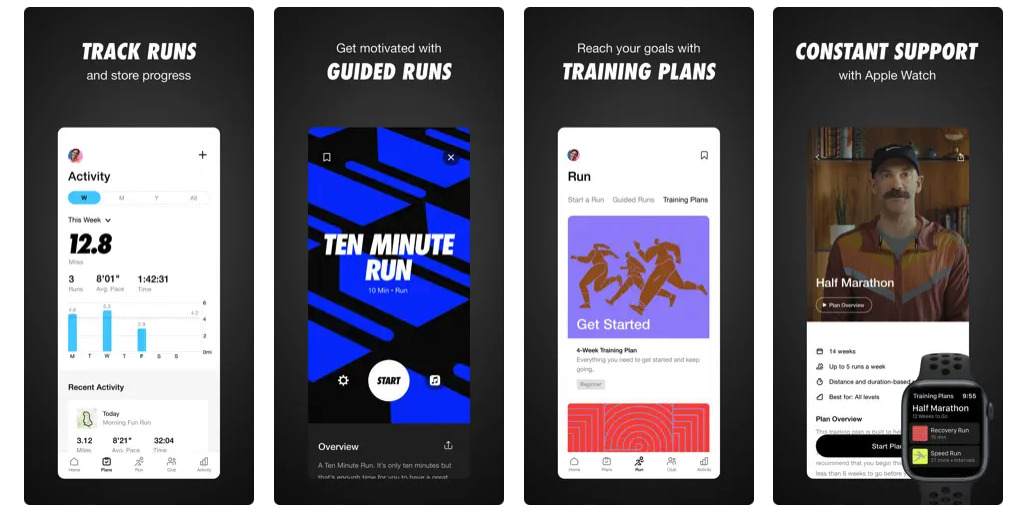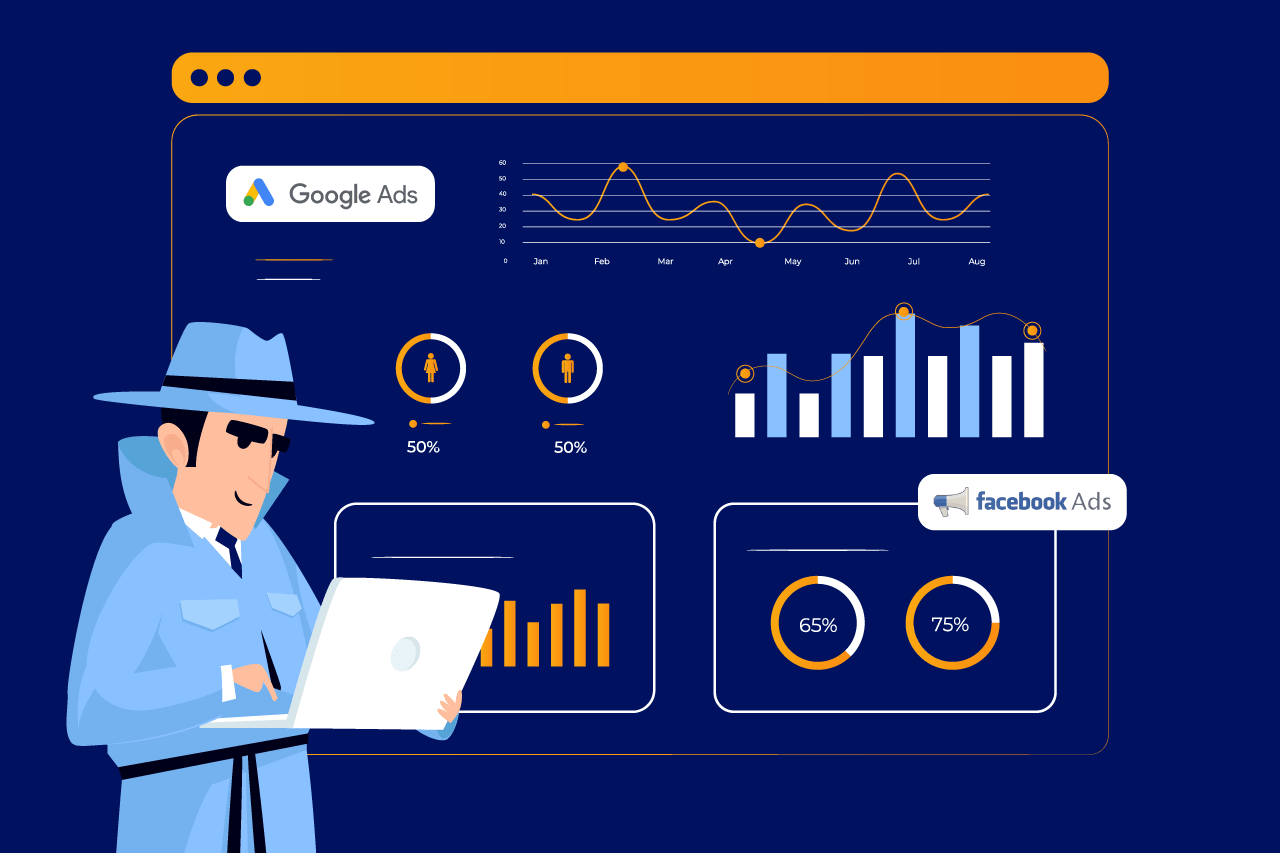
AI Marketing in Action: Detecting and Preventing Digital Fraud
September 18, 2025
The AI Marketing Advantage: Unlocking Geo-Targeting & Location Insights
September 18, 2025In the age of digital marketing, standing out from the crowd is no longer a luxury; it’s a necessity. Traditional advertising methods have become less effective as consumers become increasingly adept at tuning them out. To succeed in this competitive landscape, businesses must harness the power of AI-powered interactive ads. In this comprehensive guide, we’ll delve deep into the world of interactive ads, exploring their benefits, strategies for implementation, and real-world success stories.

Understanding Interactive Ads
What Are Interactive Ads?
Interactive ads are a dynamic and engaging form of advertising designed to involve the audience actively. Unlike traditional static advertisements, these ads encourage users to interact, participate, and engage directly with the content. This interaction can take various forms, such as clicking, swiping, tapping, answering questions, playing games, or even experiencing augmented reality.
Interactive ads represent a paradigm shift in marketing, moving away from the one-sided communication of old-school advertising. They transform passive viewers into active participants, making the audience an integral part of the brand’s message. These ads create a two-way conversation, allowing brands to gather valuable data, receive immediate feedback, and tailor their marketing efforts to individual preferences.
The Evolution of Advertising
The history of advertising is a fascinating journey that mirrors the evolution of technology and media. From the early days of print media and billboards, advertising has constantly adapted to new mediums. However, the digital revolution brought a seismic shift in the marketing landscape.
The internet and smartphones have become ubiquitous, forever changing how brands connect with their audience. Static banner ads and pop-ups became commonplace, but consumer fatigue soon emerged. People began ignoring or actively blocking these intrusive ads, leading to the rise of ad-blockers and ad-blindness.
This shifting landscape necessitated a new approach, and interactive ads emerged as the solution. Brands realized that to capture attention in an era of information overload, they needed to create experiences rather than mere advertisements. Interactive ads leverage technology to captivate and engage audiences in ways that static ads cannot.
Why Interactive Ads Matter
Interactive ads matter because they cut through the noise and capture the audience’s attention in an increasingly crowded digital space. The internet is flooded with content vying for a user’s limited time and attention, making it imperative for brands to stand out.
One of the critical reasons why interactive ads matter is their ability to create memorable experiences. When users actively engage with content, they form emotional connections and are more likely to remember the brand and its message. These interactions also create a sense of ownership, as users feel they are making choices within the ad experience.
Moreover, interactive ads provide a treasure trove of data. Every interaction, click, and response yields valuable insights into user behaviour. Brands can use this data to refine their marketing strategies, deliver more personalized content, and drive conversions.
The Psychology Behind Interaction
The effectiveness of interactive ads is deeply rooted in human psychology. As social beings, we are naturally drawn to activities that involve participation and engagement. When we engage with something, our brains release dopamine, the “feel-good” neurotransmitter, which reinforces the behaviour.
This psychological aspect is why interactive ads are so compelling. When users actively participate in an ad experience, they are not merely passive observers; they become part of the narrative. This involvement triggers emotions and creates a sense of connection.
Furthermore, interactive ads tap into the psychological principle of reciprocity. When brands offer value through interactive content, users are more inclined to reciprocate by taking the desired action, such as purchasing or sharing the content with others.
In summary, understanding interactive ads involves recognizing their unique ability to engage audiences through active participation. These ads have evolved in response to changing consumer behaviour and technology, offering brands an opportunity to create memorable experiences, gather valuable data, and leverage fundamental principles of human psychology to drive engagement and conversions.

Types of Interactive Ads
Gamification: Turning Browsing into Play
Gamification is a powerful technique employed in interactive advertising that transforms the browsing experience into a playful and engaging journey. At its core, gamification incorporates game-like elements, such as challenges, rewards, and competition, into non-gaming contexts.
The concept is simple yet effective: By turning an ad into a game, users are entertained and motivated to interact further. Gamified interactive ads often feature progress bars, achievements, and leaderboards, creating a sense of user accomplishment and competition.
An excellent example of gamification in advertising comes from the fashion industry. Brands have designed interactive ads that allow users to assemble virtual outfits, mixing and matching various clothing items. Users can then share their creations on social media or, in some cases, even purchase the things they’ve customized. This keeps users engaged, drives traffic to the brand’s website, and encourages social sharing.
Quizzes and Polls: Engaging Through Participation
Quizzes and polls represent another engaging facet of interactive advertising. Humans have an innate desire to express their opinions, test their knowledge, and engage in self-assessment. Interactive ads that incorporate quizzes and polls tap into these psychological inclinations.
For instance, a skincare brand may create an interactive ad featuring a skincare quiz. Users answer a series of questions about their skin type, concerns, and preferences, and the ad then provides personalized product recommendations based on their responses. This captures the user’s attention and delivers tailored content, increasing the likelihood of conversion.
Similarly, polls can engage users on social and cultural issues relevant to the brand’s identity. By inviting users to vote on a particular topic or express their preferences, brands can foster a sense of community and create a dialogue with their audience.
Personalization: Tailoring Ads to Individual Preferences
Personalization has become the holy grail of modern marketing, and interactive ads provide an ideal platform for delivering personalized content. AI-powered algorithms analyze user data, such as browsing history, purchase behaviour, and demographics, to tailor ad experiences to individual preferences.
Consider an online bookstore that utilizes interactive ads. When a user interacts with an ad for mystery novels, the AI algorithm can recommend specific titles based on the user’s past reading habits. This level of personalization increases the chances of a purchase and enhances the user’s overall experience.
Personalization extends beyond product recommendations. It can encompass the entire ad experience, from the visual elements to the messaging. For example, a sports retailer can display different sports equipment in its interactive ad based on whether the user is an avid runner or a basketball enthusiast.
Augmented Reality (AR): Bringing Products to Life
Augmented Reality (AR) represents the pinnacle of interactivity in advertising. AR merges the digital and physical worlds, allowing users to interact with digital elements in real-time through their camera or screen.
One of the most famous examples of AR in advertising comes from the beauty industry. Makeup brands have developed AR-powered apps that allow users to try on makeup products virtually. By scanning their faces with their smartphones, users can see how different shades of lipstick or eyeshadow look on them, providing a realistic and immersive experience.
Furniture retailers have also embraced AR to let customers visualize how furniture pieces would look in their homes. Users can make more informed purchase decisions by superimposing virtual furniture onto real-world spaces. This level of engagement goes beyond what static images or descriptions can offer.
In summary, interactive ad types are diverse, catering to various consumer preferences and industry-specific needs. Gamification, quizzes, polls, personalization, and AR are powerful tools for engaging audiences, delivering personalized content, and creating immersive experiences that leave lasting impressions.

AI-Powered Targeting
Machine Learning Algorithms
Machine Learning (ML) algorithms are the backbone of AI-powered targeting in interactive advertising. These sophisticated algorithms analyze vast amounts of data to identify patterns, trends, and correlations. ML algorithms predict user behaviour and preferences in advertising, enabling brands to show their interactive ads to the most relevant audience.
The beauty of ML lies in its ability to learn and adapt continuously. As users interact with an ad, the algorithm gathers data on their behaviour, allowing it to refine its predictions over time. For instance, if a user frequently clicks on ads related to outdoor gear, the algorithm will recognize this preference and prioritize displaying similar ads to that user.
Additionally, ML algorithms can analyze multiple variables simultaneously, considering factors such as demographics, location, browsing history, and even the time of day. This multifaceted analysis ensures that interactive ads are shown to the right audience and at the optimal moment.
Predictive Analytics
Predictive analytics takes the capabilities of machine learning a step further by forecasting future trends and user actions. By examining historical data and patterns, predictive analytics algorithms can make highly accurate predictions about what users will likely do next.
For example, an e-commerce brand can use predictive analytics to anticipate which products a user will most likely purchase based on their past behaviour. This enables the brand to showcase these products prominently in their interactive ads, increasing the chances of conversion.
Predictive analytics can also help brands stay ahead of market trends. By analyzing data on industry shifts, consumer sentiment, and emerging technologies, brands can proactively adjust their advertising strategies to capitalize on upcoming opportunities.
Customer Segmentation
Customer segmentation is a fundamental aspect of AI-powered targeting. Rather than treating all users as a monolithic group, interactive ads are tailored to specific customer segments with shared characteristics and preferences.
AI algorithms excel at identifying these segments by analyzing user data. For instance, an online fashion retailer might identify segments such as “young professionals,” “outdoor enthusiasts,” or “fashion-forward trendsetters.” Each segment receives interactive ads customized to their unique interests.
Customer segmentation not only enhances the relevance of ads but also allows brands to craft more compelling messaging. By understanding the needs and desires of each segment, brands can speak directly to their target audience’s pain points and aspirations.
A/B Testing and Optimization
A/B testing is a critical component of AI-powered targeting in interactive advertising. This method involves creating two versions of an interactive ad and showing them to different groups of users. By comparing the performance of these variations, brands can determine which elements are most effective in engaging the audience.
For instance, an e-commerce company may create two versions of an interactive ad for a new product. Version A might feature a video demonstration, while version B emphasizes user reviews. The brand can discern which approach resonates better with its audience by tracking user interactions and conversion rates.
AI plays a crucial role in A/B testing by providing real-time data analysis. Algorithms can quickly process the results of A/B tests and provide recommendations for optimization. For example, if version B of the ad performs significantly better, the algorithm may suggest that the brand focus on user reviews in future campaigns.
In summary, AI-powered targeting in interactive advertising is a sophisticated blend of machine learning, predictive analytics, customer segmentation, and continuous optimization. These techniques work harmoniously to ensure that interactive ads are shown to the right audience and tailored to individual preferences, increasing engagement and conversion rates.

Creating Compelling Interactive Ads
Storytelling in the Digital Age
Storytelling has been a potent tool in marketing for centuries, and it remains as relevant as ever in the digital age. Interactive ads provide a unique canvas for brands to weave compelling narratives that captivate and engage users.
In the world of interactive ads, storytelling takes on a new dimension. Brands can create immersive narratives that unfold as users interact with the content. For example, an automotive company might craft an interactive ad that lets users explore a car model’s history by clicking on various parts of the vehicle, each revealing a different chapter in its story.
Compelling storytelling in interactive ads balances information and engagement. It should provide users with valuable insights while keeping them entertained and curious to explore further. This fusion of education and entertainment is the hallmark of successful interactive storytelling.
Design Principles for Interactive Engagement
The design of interactive ads is a crucial element in their success. Unlike traditional ads, which are primarily static, interactive ads must be visually appealing, intuitive to navigate, and responsive across various devices.
User experience (UX) principles are at the forefront of interactive ad design. The user’s journey through the ad should be seamless and enjoyable. This involves creating clear navigation paths, ensuring that interactive elements are easy to understand, and optimizing load times for a smooth experience.
Visual aesthetics also play a significant role. Interactive ads should be visually engaging, utilizing high-quality images, videos, and animations. Consistency in design elements, such as colour schemes and fonts, helps establish brand identity and fosters trust.
Mobile optimization is a non-negotiable aspect of interactive ad design, considering the prevalence of smartphones in today’s digital landscape. Ensuring that interactive ads function seamlessly on mobile devices is essential to reach a broader audience.
Crafting the Call to Action (CTA)
The call to action (CTA) is pivotal in any interactive ad. It represents the culmination of the user’s engagement and determines their next steps. Crafting a compelling CTA is an art form that can significantly impact the success of an interactive ad.
Effective CTAs should be clear, concise, and action-oriented. They should leave no ambiguity about what the user is expected to do next. Phrases like “Buy Now,” “Learn More,” or “Get Started” are classic examples of CTAs that prompt immediate action.
However, the language of the CTA should also align with the tone and style of the ad. For instance, a playful and gamified interactive ad may use more informal language in its CTA, while a severe financial institution’s interactive ad may adopt a more formal tone.
Incorporating urgency into the CTA can also boost conversions. Phrases like “Limited Time Offer” or “Act Now” create a sense of immediacy, compelling users to take action promptly.
Balancing Information and Experience
A common pitfall in interactive ad design is the imbalance between providing information and delivering an engaging experience. While engagement is crucial, users also seek value from the content.
Brands must strike a delicate balance between offering interactive engagement and conveying essential information. Overloading users with information can overwhelm them, causing disengagement. On the other hand, an overly simplistic ad that lacks substance may fail to communicate the brand’s message effectively.
One effective strategy is to use interactive elements to deliver information gradually. Users can unlock additional content or details by engaging with the ad. For instance, a restaurant might create an interactive menu where users click on dishes to reveal ingredients, preparation methods, and customer reviews.
Ultimately, interactive ads should create a holistic experience that seamlessly integrates engagement and information. The goal is to provide users with valuable insights while keeping them entertained and involved.
In summary, creating compelling interactive ads involves:
- Mastering the art of storytelling.
- Adhering to design principles for interactive engagement.
- Crafting persuasive CTAs.
- Striking the delicate balance between information and experience.
These elements work together to ensure that interactive ads leave a lasting impression and drive desired actions from users.

Success Stories: Brands That Nailed Interactive Ads
Now that we’ve explored the fundamentals of interactive ads and their creation, let’s delve into real-world examples of brands that have harnessed their power to remarkable effect.
Nike’s Gamified Running Campaign
Nike, the global sportswear giant, demonstrated the immense potential of interactive ads with its gamified running campaign. In an era where health and fitness have become a lifestyle, Nike’s campaign tapped into the competitive spirit of runners.
The interactive ad featured a virtual race where users could challenge themselves and others to beat their best running times. Users entered a gamified world of running challenges, virtual rewards, and leaderboards by simply clicking on the ad.
What set this campaign apart was its ability to transform solitary running into a social and competitive activity. Users could connect with friends, share their achievements on social media, and earn virtual badges for completing challenges. This engaged users and fostered a sense of community around the Nike brand.
Buzzfeed’s Quizzes: A Viral Phenomenon
Buzzfeed, a media company known for its viral content, leveraged interactive ads to engage its audience on a whole new level. Buzzfeed’s interactive quizzes became a cultural phenomenon, captivating users and driving massive traffic to their websites.
These quizzes were not just fun; they were highly shareable. Users could answer topics ranging from “Which Disney Princess Are You?” to “What’s Your Spirit Animal?” The results were entertaining and resonated with users on a personal level.
Buzzfeed’s interactive ads went viral because they tapped into users’ desire for self-expression and the innate human curiosity to learn more about themselves. By allowing users to share their quiz results on social media, Buzzfeed extended the reach of its content exponentially.
Amazon’s Personalized Product Recommendations
Amazon, the e-commerce giant, has mastered the art of personalization in its interactive ads. The cornerstone of their success lies in their AI algorithms that analyze user behaviour and preferences to deliver hyper-relevant product recommendations.
When users engage with Amazon’s interactive ads, they are presented with a curated selection of products tailored to their interests. For example, if a user has been browsing for gardening tools, an interactive ad might showcase a variety of gardening equipment, plants, and related accessories.
Amazon’s personalized approach increases the chances of conversion and enhances the user experience. Users feel like the brand understands their needs and preferences, creating a sense of trust and loyalty.
IKEA’s AR Furniture Preview
IKEA, the Swedish furniture giant, revolutionized how people shop for furniture with its augmented reality (AR) interactive ads. IKEA’s app allows users to visualize how furniture would look in their homes before purchasing.
Users can scan a room with their smartphone camera to place virtual IKEA furniture in their living spaces. They can see how a new couch, bookshelf, or coffee table fits their existing decor. This immersive experience eliminates the uncertainty of buying furniture online and enhances users’ confidence in their purchase decisions.
IKEA’s interactive ads not only engage users but also remove a significant barrier to online furniture shopping—the fear of making the wrong choice. This innovation has set a new standard for the industry and showcases the transformative potential of AR in interactive advertising.
In conclusion, these success stories illustrate how brands across various industries have harnessed the power of interactive ads to engage users, foster community, drive traffic, and enhance the user experience. By understanding their target audiences and leveraging innovative interactive ad formats, these brands have achieved remarkable results and set new standards in digital marketing.

Measuring and Analyzing Interactive Ad Performance
In interactive advertising, measuring and analyzing performance is critical to ensure that campaigns are effective efficient, and provide a return on investment. By tracking key metrics, leveraging data analysis tools, and making data-driven decisions, brands can optimize their interactive ads for maximum impact.
Key Metrics to Track
To gauge the success of an interactive ad campaign’s success, monitoring a range of critical metrics is essential. These metrics provide valuable insights into user behaviour, engagement, and conversion rates. Some of the most important metrics include:
- Click-Through Rate (CTR): CTR measures the percentage of users who click on an ad after viewing it. It’s a fundamental metric that indicates how compelling an ad is in driving user engagement.
- Conversion Rate: The conversion rate measures the percentage of users who take a desired action, such as purchasing, signing up for a newsletter, or filling out a contact form. This metric directly reflects the effectiveness of an interactive ad in driving conversions.
- Bounce Rate: Bounce rate indicates the percentage of users who land on an ad but leave without interacting further. A high bounce rate may suggest that the ad’s content or user experience needs improvement.
- Time on Page: This metric measures how long users interact with an ad. Longer engagement times often indicate that the ad holds users’ attention and provides value.
- Engagement Rate: The engagement rate considers various interactions within the ad, such as clicks, swipes, taps, and gameplays. It provides a holistic view of user engagement and can highlight which interactive elements are most effective.
- ROI (Return on Investment): ROI calculates the profitability of an interactive ad campaign by comparing the costs of the campaign to the revenue generated. It’s a crucial metric for assessing the overall success of an advertising campaign.
Tools for Data Collection and Analysis
To effectively measure and analyze the performance of interactive ads, brands rely on a range of data collection and analysis tools. These tools help aggregate and interpret the vast amount of data generated by user interactions. Some commonly used tools include:
- Google Analytics: Google Analytics is a robust platform for tracking website and ad performance. It provides detailed insights into user behaviour, conversion tracking, and audience demographics.
- Ad Analytics Platforms: Many advertising platforms, such as Google Ads and Facebook Ads, offer built-in analytics tools that track ad performance. These tools often provide real-time data and insights specific to the platform.
- Heatmaps: Heatmap tools like Hotjar or Crazy Egg visually represent user interactions with an ad. Heatmaps can reveal where users click, hover, or lose interest, helping brands optimize interactive elements.
- Customer Relationship Management (CRM) Systems: CRM systems like Salesforce or HubSpot enable brands to track user interactions beyond the initial ad engagement, providing a comprehensive view of the customer journey.
- A/B Testing Platforms: A/B testing tools, such as Optimizely or VWO, allow brands to conduct controlled experiments to assess the effectiveness of different ad variations. This iterative testing process helps refine ad campaigns.
Making Data-Driven Decisions
The wealth of data collected from interactive ads is invaluable, but it’s only as useful as the decisions it informs. Brands must translate data into actionable insights and strategies to continuously improve ad performance.
For example, if the data shows that a particular interactive element within an ad has a significantly higher engagement rate, brands can replicate that element’s success in future campaigns. Likewise, brands can allocate more resources to target that audience if a specific demographic segment demonstrates a higher conversion rate.
Data can also reveal potential areas for improvement. High bounce rates or low time-on-page metrics may indicate that the ad’s content or user experience needs adjustment. In response, brands can optimize content, streamline navigation, or refine their calls to action.
Continuous data analysis enables brands to fine-tune their targeting, creative elements, and user experiences, ultimately leading to more effective interactive ad campaigns.
Continuous Improvement Strategies
The journey of improving interactive ad performance is an ongoing one. Brands should adopt continuous improvement strategies to stay ahead of the competition and adapt to evolving user preferences and technologies.
- Iterative Testing: A/B and multivariate testing should be integral to any interactive ad campaign. Brands can experiment with different interactive elements, messaging, and visuals to identify what resonates most with their audience.
- Personalization: As data analysis provides insights into individual user preferences, brands can enhance ad campaigns by delivering highly personalized content and experiences.
- Feedback Loops: Encouraging user feedback within interactive ads can provide valuable insights into user preferences and areas for improvement. Brands can use surveys, comment sections, or chatbots to facilitate feedback.
- Stay Current with Technology: Keeping up with technological advancements, such as augmented reality or voice interactions, ensures that interactive ads remain innovative and engaging.
By integrating these strategies, brands can harness the full potential of interactive ads and continually refine their campaigns for optimal performance.
In conclusion, measuring, analyzing, and optimizing the performance of interactive ads are essential steps in the success of any AI marketing campaign. Through carefully tracking key metrics, data analysis tools, data-driven decision-making, and ongoing improvement strategies, brands can ensure that their interactive ads engage users effectively and deliver the desired results.

The Future of Interactive Ads
The landscape of interactive advertising is in a perpetual state of evolution, and staying ahead of the curve is vital for brands aiming to remain competitive. The future of interactive ads promises exciting advancements driven by technology, changing consumer behaviour, and innovative strategies.
AI Advancements
As artificial intelligence continues to advance, it will play an even more significant role in the future of interactive ads. AI will power more sophisticated targeting and enable creating of highly personalized and dynamic ad experiences in real-time.
For instance, AI-driven chatbots and virtual assistants will become integral to interactive ads, providing users instant responses to inquiries and personalized recommendations. Interactive ads will adapt in real time based on user interactions, preferences, and even emotions, creating more engaging and tailored experiences.
AI will also enable predictive advertising, where ads are served to users before they even realize they need a product or service. AI algorithms will anticipate user needs and proactively present relevant, interactive ads by analysing user behaviour and data trends.
Integration with Social Media Platforms
The integration of interactive ads with social media platforms will continue to grow in importance. Social media has become a primary channel for user engagement, and interactive ads that seamlessly fit within these platforms will have a significant advantage.
For example, immersive augmented reality (AR) experiences within social media apps will allow users to engage with products or services in their environment, enhancing the overall user experience. Interactive ads on platforms like Instagram and Facebook will leverage the power of user-generated content, enabling users to create and share their interactive experiences, effectively becoming brand ambassadors.
Moreover, the social aspect of interactive ads will evolve, allowing users to collaborate or compete with friends in real time. Gamification elements within social media-based interactive ads will encourage user interaction and increase virality.
Ethical Considerations
Ethical considerations surrounding interactive ads will become more pronounced as digital advertising evolves. Privacy concerns, data collection, and transparency will be central issues for brands and users.
Brands must prioritize user data protection and transparency in their interactive ad campaigns. Obtaining consent for data collection and ensuring user information is used responsibly will be paramount. Brands that demonstrate ethical practices will build trust and credibility with their audience.
User data ownership and control will also be a topic of discussion. Users may demand more control over their data and the ability to entirely opt out of data collection. Brands must adapt their interactive ad strategies to align with evolving privacy regulations and user preferences.
Staying Ahead of the Curve
To thrive in the future of interactive advertising, brands must adopt a forward-thinking approach. Staying ahead of the curve involves:
- Investing in AI and Data Analytics: Brands should continue to invest in AI technology and data analytics to enhance targeting, personalization, and ad performance.
- Embracing Emerging Technologies: Brands should be open to adopting emerging technologies such as virtual reality (VR), extended reality (XR), and voice interactions to create novel and engaging interactive ad experiences.
- Prioritizing User Experience: User experience remains a critical factor in the success of interactive ads. Brands should continually refine the user journey, optimize load times, and ensure seamless cross-device compatibility.
- Adapting to Regulatory Changes: Brands should closely monitor and adjust to data privacy regulations and industry standards changes to ensure compliance and ethical practices.
- Experimenting and Innovating: Brands should maintain a culture of experimentation and innovation, continuously testing new interactive ad formats, creative strategies, and technologies to captivate their audience.
In conclusion, the future of interactive ads is a dynamic and ever-evolving landscape driven by AI advancements, social media integration, ethical considerations, and innovative strategies. Brands that proactively embrace these trends and prioritize user engagement and data ethics will be best positioned to succeed in the evolving world of digital marketing.


